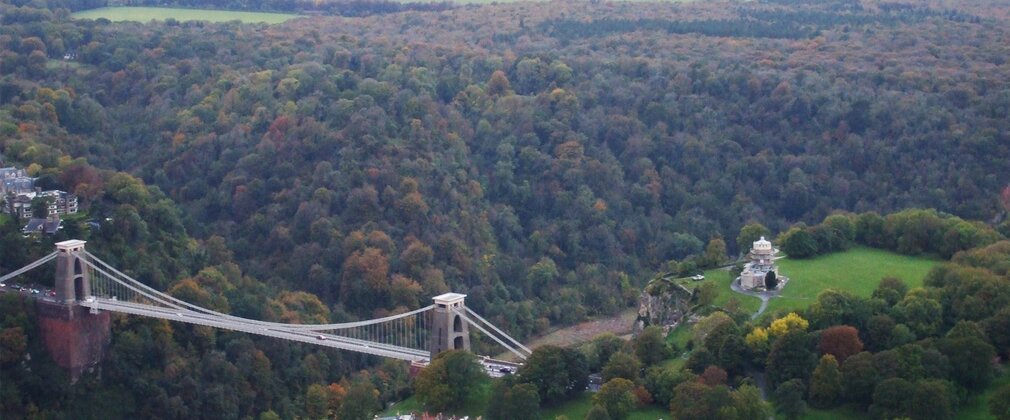Bristol Woods forest plan
A forest plan is a description of the woods or forest as it is now and what is considered when deciding what is best for the future. The forest plan describes how the forest will develop over time and gives specific information about approved tree felling, replanting and regeneration over the next ten years.
About the Bristol woods area and Leigh Woods
The plan area consists of 12 discrete blocks of woodland in North Somerset, with a combined area of 265 hectares. Leigh Woods is the largest block and is located on the edge of the Avon Gorge, while the Failand Woods comprise 11 blocks with a total area of 140 hectares, lying close to the village of Failand, to the southwest of Leigh Woods.
Most of the Forestry England owned part of Leigh Woods is recorded as ancient woodland, and about a quarter is within the Avon Gorge Site of Special Scientific Interest (SSSI). Due to its importance at the European level, most of the SSSI is also designated as the Avon Gorge Woodland Special Area of Conservation (SAC).
The northern section of Leigh Woods (known as Paradise Bottom) is part of the Leigh Court legally protected historic landscape (heritage category – Grade II Parks and Gardens). Features of historical interest in the Failand Woods include a grove of giant redwood trees planted in 1870, an old lime kiln and a post-medieval well.
Leigh Woods is a popular visitor site, with waymarked walking and cycle trails, arboretum and large car park. The Failand Woods are also used extensively by local people and community groups.
Leigh Woods is 80% broadleaves – with beech and ash being the most common species, but also including oak, small leaved lime, wych elm and hazel. Conifers - including Corsican pine, yew and larch – make up 14% of the composition, and the remaining 6% includes the car park, meadow, ponds and streams in Paradise Bottom, and temporarily open felled and recently coppiced areas. The Failand Woods combined, are 64% broadleaves – the main species being ash, beech and sycamore – and 33% conifers – predominantly Corsican pine, Japanese larch and Douglas fir. The remainder is felled and therefore temporarily open. Although there has been planting in the plan area in every decade since 1900, there are many crops that date from the 1950s and 60s, which means that parts of the woods are very even aged in structure.
Objectives of the plan
The aims of management in the Bristol Woods include:
- sustainability: we will practice exemplary forest management in the Bristol Woods – endorsed by our continued certification under the UK Woodland Assurance Standard.
- resilience: we will encourage diversification of species and age structure through active management, so that the Bristol Woods thrive in the face of threats from pests and disease and climate change.
- biodiversity:we will protect and enhance the designated areas in Leigh Woods and will actively look for opportunities to increase biodiversity in all of the woods.
- productivity: the Bristol Woods will continue to be worked using site-appropriate scale and methods, in order to provide timber to meet current and future demands.
- heritage: historic features and landscapes in the Bristol Woods will be protected and enhanced.
- people: the Bristol Woods will continue to be enjoyed and valued by people – for recreation, education and conservation.
What we’ll do
Most of Leigh Woods, and parts of the Failand Woods, will be managed under low impact silvicultural systems, including:
- shelterwood, where the overstorey provides seed and shelter for the next generation of trees.
- selection, where individuals or groups of trees are removed to create gaps for planting or natural regeneration.
- minimum intervention, where parts of the woodland are left alone for ecological reasons.
Some areas will be clear-felled during this plan period for the benefit of the woodland environment and its wildlife – for example diseased ash will be removed in places, providing valuable temporary open space for a couple of years, after which the areas will be restocked with species appropriate for the sites and their management objectives.
Parts of Leigh Woods and Ashton Hill Plantation will be coppiced to create a mosaic of different aged woodland and temporary open space for wildlife benefits.
Most other areas will be thinned – broadleaves on a ten year cycle and conifers every five years.

